Leaderboard
Popular Content
Showing content with the highest reputation on 04/14/2019 in all areas
-
PCM Macchi 200 in 1/32
Model_Monkey and 10 others reacted to baffozac for a topic
My Macchi 200 built with a little help from my friends and months of patience, most of the parts had to be scratched : For example the engine.11 points -
afternoon ladies just a quick update on the panel skinning on the P51 - not much to show panel by panel, as the process is pretty much the same but the lower wing is almost complete so time for a few pics.. ..the C model has quite a large outlet for spent cartridges and a chute assembly that can be seen through the hole, so first up is the panel and the chute.. ..I don't really know what the little slots are for - venting maybe.. ..the two were assembled and a hole routed into the wing to make room for it.. ..the panels that define the shape of the gear door opening were done next, with some structure along the edges the doors sit on when closed.. ..and this is where it's at... ..the panel behind the gear opening will be left until all the filling of the leading edge is done as it has domed screws and is left natural metal as seen below and if I add it now these will likely get damaged by the sanding / prepping process.. ..lower wing done otherwise.. ..will do the upper wing next and I am on leave all this week so hope to get lots of it done.. TTFN Peter11 points
-
Tamiya's 1/32 Mustang and Corsair, both B&W
Biggles87 and 9 others reacted to Fancherello for a topic
hello I'm working on a pair of Tamiya's superb kits: a Mustang and a Corsair, both being built together as a Black&White project. I've been waiting a biy before sharing those as I wasnt too sure how this would turn into. The Corsait will probably be Ira Kepford's second Corsair which is very well pictured on both sides, the Mustang will be the famous Lou IV both for the fun of tackling the blue/green color issue on my way and because this plane and his famous pilot had their fatal fate not very far away from where I live. The Corsair has been started by using Brassin's set, the pit is superb, the engine too...but i'm making a step back with the latter as it doesnt allow a clean closed display with the provided cowlings. I'm now working on the kit's engine and will keep the Eudard one for a separate display. I've added a HGW harness set that I've been whitening to keep in the topic. I've been working on the Mustang the same way with personal work on he engine: casing texturing, wiring and bits. I also worked the wings and tried to replicated some worn puttying by working layers of surfacer. I used two tines of surfacer to help controlling that. As sanding is feathered, actually filled rivets extend a bit further that the surfacer color. The cockpit is done with some Barracuda add ons and I used some RBrinzan's etched templates for the floor. so now I'm working on the Corsair's kit's engine and the Mustang wheel wells ! bye Fanch10 points -
Thanks Ray! Please call me John! Trying to get back on track after a busy week. I'm trying to figure out the engine cowling area. Right now I've just dry-fit the cowling around the engine after gluing the Vector resin cowling flaps to the back of the engine. Because of flex of the resin, it's difficult to get a tight joint. Although Tamiya intended to have the engine cowling removable, I may have to glue them in to order to avoid the gaps. Here's the view of the engine from the outside. Do you notice the now-corrected Pratt & Whitney logo that I had erroneously installed upside down? It's been corrected due to the generosity of another LSP modeler who graciously sent me some replacement decals. Thank you Damian! During the week, when I had some periods of available time, I painted the True Details resin parachute.10 points
-
Managed time to get a bit of paint on the cockpit. cheers Matt8 points
-
Decalled and levered: Standing down to await the release of the observer's station. D8 points
-
Finally got a coat of primer on but there were problems, of course. One I gotta’ own myself because the model sat on the bench for a couple weeks and picked up dust. No big deal, I’ll just wipe it down with some IPA and use a paper towel that someone told me is “lint free”. Long story short, It's not and I didn’t realize how much lint was on it until I started priming. So I had to stop and tediously remove all the lint I could fine, which went okay. THEN! My completely clean airbrush started clogging and spit out a few chunks. At this point I’m like “the hell with it” and soldiered on clearing the occasional clog. I knew the airbrush was clean so just to see what would happen I filtered some with an ancient filter funnel I’ve had for 40 years and sure enough the primer has chunks in it. Lesson learned. It could have been a lot worse but now I have to do some sanding to get rid of the problem areas. See those five dots in the filter screen? Those are chunks of primer and they do not pass harmlessly through an airbrush. I guess I’ll be filtering my paint from now on. Enough whining, this is what everyone seems to be waiting for. Comments and critiques are always welcome. Don’t be shy - an honest critique is a catalyst for improvement.8 points
-

A Tale of two Cobras: FINISHED
scvrobeson and 6 others reacted to Dukie99 for a topic
Time for an update on the Zulu. After giving a coat of primer, it was time to add the photoetch. I am not a big fan of phototech because I am usually bad at it, but here the pe is a pleasure to work with, it is very thin and conforms well and all the places where the pe goes is recessed so you get a very nice flush finish without much effort. I like it a lot. See for yourself. Cheers, David7 points -
I built a new gunsight based on the kit part. I drilled out the kit part, put a chrome disk in the bottom and made the lens out of epoxy tinted with Tamiya clear yellow. Scratch built the brackets and used clear acetate for the reflectors. Not exactly “correct” but it is what it is. Propeller. One of the big problems I have is that my hands aren’t steady enough to paint the camo scheme so I made masks which took a couple tries but it was time well spent. My test mule. Pay no attention to the colors, I just grabbed two colors to test the masks. If the model turns out this good I’ll be happy. The odd scheme on the cowl is unique to Wake Island Wildcats. The planes were painted on the carrier delivering them and the prevailing opinion is that they draped a cover over the engine and cowl so they didn't get paint on the engine. I'm going to try some pre-shading on the mule. Never tried it, just like almost everything else on this model.5 points
-
WNW airco DH9
tucohoward and 3 others reacted to DrDave for a topic
Irish free state air arm, Fermoy 1923.4 points -
Lemkits 1:32 La-9 - Photos of the first castings
kalashnikov-47 and 3 others reacted to dutik for a topic
A few images for the modellers building a La-9: Don't miss the auxillary iron sight. Upor, I guess you still know this: The tail wheel unit differs between the La-9 and La-11. Regards - dutik4 points -

F-84G Thunderbird - Complete!
sandokan and 3 others reacted to themongoose for a topic
Working through some assembly details for now. The cockpit was a little more work than anticipated. HB has the IP right against the throttle and several knobs on the side panels end up hidden behind the IP due to this. Soooo, I cut the fuselage halves from the sprue and test fit it all together so I could trim the IP...but they fooled me and even after cutting it shorter there was no interference to the fit lol. You guys know me by now, it has to have a pilot lol I made a chute for him out of clay. Checked the fit to the pedals while I was at it. Can you believe, 1st time I’ve not had to cut his feet off! While parts on the cockpit dried I pulled out the wings to have a go at the wheel wells. which brings up a detail about skinning this with aluminum foil...do I open up enough gap here to roll the foil over the edges of the wheel weel and the doors?4 points -
More added each day... trying to build different style temples to go with the wide variety of 'faiths' that permeated the ' Holy City'.... I felt that there should be a street or two that merged into a broad avenue for parades and religious processions ....so the buildings had to form that... Wrapping around the temple mount... And finally a beauty shot looking across the city... I was getting bogged down so when Jimi suggested again we add some of the mountain top I was ready for a change.. so off to the model shop I went for milliput..... Tune in next week to see what silliness I'm hoping to get into !! Cheers Vaughn4 points
-

1/32 Kitty Hawk F-5E Kicked Up A Notch. Oct 3/19. Finished!
jgrease and 3 others reacted to chuck540z3 for a topic
April 8/19 I’ve been a bit distracted lately, but I did get a chance to work on the wings. Like much of the kit parts, they are a bit lumpy, the surface is slightly rough and the rivet detail is shallow and bit wide. Without adding a dark wash, it’s hard to photograph, so you’ll just have to take my word for it. After giving the wings the same “Chuck” treatment I’ve given the rest of the model, the detail is much better and smoother. This will be critical later for a smooth gloss black finish. Also, rivet patterns were added according to references, top and bottom. The bottom of the wings are a lot more complicated. Here are the key things you should do if you follow my lead. 1 The outer join does not exist, so it should be filled and sanded smooth, then a nose-like panel line scribed across it as shown. 2 The other join on the LEX is OK and should stay, but be re-scribed. 3 The gear bay walls should be glued securely to the top of the wing, because that’s all that’s holding on to the very weak landing gear legs. 4 If you aren’t using the inner pylons, do not open the holes as shown in the instructions in Step #19, while the outer pylon holes- which are already open- should be filled if you’re not using them. Rather than just fill them with CA glue, I used styrene rod to create pylon anchor points or plugs with more detail, as found on the real deal. And this is all that’s holding the gear legs in place: Two tiny slots. Yikes! While fairly accurate, they are fairly weak. All the more reason to put them on at the very end of the build, like I usually do anyway. The wing to fuselage join isn’t horrible, but it’s not plug and play either. While a chore to fix, this is more common in modeling than it’s not, so no big deal. Again, a lot of those crooked ghost panel lines should disappear after a coat of paint (fingers crossed). Cheers, Chuck4 points -
3 points
-
Some work on the cockpit. What I have done is to cut up some old consoles from old kits or unused bits . I then sand them down to wafer thinness and then glue them to the new consoles. This isn't really accurate but it does give that "busy" look that I am after. IP. Flat panel with Airscale decals and bezels. Looks a little wacked in this large photo but will look the part when installed. A little work on the tip tanks. The metal tab will slide into a slot in the end of the wing. Dry fit of cockpit componets. Canopy and windscreen set in place. The windscreen that comes with the kit seemed too large. So I cut down an F-18 windscreen and sanded a flat spot in front....seems to work. Later, Dan3 points
-
A swarm of Mossies!
Derek B and 2 others reacted to Bruce_Crosby for a topic
Hi Guys, Some photos of yesterday's work on the two Mosquito builds. Untitled by Bruce Crosby, on Flickr Untitled by Bruce Crosby, on Flickr Untitled by Bruce Crosby, on Flickr Untitled by Bruce Crosby, on Flickr Untitled by Bruce Crosby, on Flickr Untitled by Bruce Crosby, on Flickr Untitled by Bruce Crosby, on Flickr Untitled by Bruce Crosby, on Flickr Untitled by Bruce Crosby, on Flickr Regards, Bruce Crosby3 points -
Revell F/A-18E Super Hornet build.
Starfighter and 2 others reacted to dmthamade for a topic
More fit stuff. The side pieces alignment is better after scraping away excess plastic on the intake/lower fuselage parts. Some parts need minor work, some need a good amount of scraping. I've highlighted areas to work by brown Sharpie. Inner intake parts needed a bit of work, fit was not too bad. That center part seemed to fall right into place, but i won't glue this to the intake walls until the upper and lower are assembled and the forward fuselage is installed. Fit looks ok, gaps are due to not being clamped. They do align well. The lower wing surfaces key into the fuselage sides, fit at the front is important as the intakes meet here, too. Get this area right to prevent problems later. The lower wing is supposed to key in, but doesn't. The groove is too narrow for the fuselage side fo fit, sooooo.....more scrapping!!! This should end up like this. Make sure of this fit now before gluing on the side pieces, trying to scrape the side when installed would be difficult. Looking forward, i'm trying to decide if it would be better to glue the lower wings onto the fuselage, then glue on the top, or glue the wing bottoms onto the upper piece first. I'm leaning towards the second idea. I have to say, if your on the fence about buying this kit, do so now while the moulds are fresh. If the flash is bad now, when the moulds are old it means even more work. Don3 points -
I started cutting up bits of scrap plastic I had laying around and adding buildings made from squares and various shapes... I was puzzling it out as I went along, no city planning involved. To rest my eyes (and nerves) I read a lot of the thinking and 'history' of the Jedi, Jedha city and the 'religion' of the Force... there were many different offshoots as with any 'faith' and I wanted to give the city a variety of flavors.. but the center piece was Jedha and the temple/ temple mount.. so it had to be held special.. so a wide ramp was built and various temples and spires added.. At the other end of the city more buildings and temples were rising.. some had up to 8 parts..... I averaged about a square inch a day before my eyes and nerves gave out... streets, temples, buildings... from the SD's viewpoint it looks orderly... But from an oblique angle......3 points
-

1/32 Kitty Hawk F-5E Kicked Up A Notch. Oct 3/19. Finished!
CarstenB and 2 others reacted to chuck540z3 for a topic
Thanks Guys! I have been asked how I use CA glue as a filler in the other forum, especially when panel lines and rivet detail is enhanced or restored. Although I’ve written tutorials on this subject before, I can’t find them, so here’s a new updated one that I will share here as well. Using CA Glue as a Filler I have been using Cyanoacrylate (CA) glue as a filler for many years and more recently, about 90% of the time over traditional modeling putties. I use CA glue on every single join of my models, to make sure there are no gaps to be found later. While putty still has its place, CA glue has the following advantages over putty: 1) Drying time is quick to immediate, especially if you use an accelerator. 2) Since it dries harder, it sands finer- but sanding must be done within an hour or two of drying. Left to cure overnight, it will become much harder than the plastic, making sanding difficult. 3) As a glue, it strengthens joins while it fills them. 4) Panel lines can be created or re-scribed over CA glue with a smooth finish, which you can't do with putty. Again, this should be done within a short time after drying. 5) CA glue doesn’t shrink as it dries, so what you see is what you get after drying. 6) Tell tale flaws can be detected with strong lighting, allowing immediate repair. CA Glue Properties. The first point I stole from the internet, which explains it better than I could. 1) CA glue can only bond with a surface when there is moisture present. This means if the CA glue is placed on a perfectly dry surface, it will not stick to the surface or form a bond. In contrast, when any amount of moisture is present, the molecules in the glue will react with the moisture to form tight chains in between the two surfaces in contact. This reaction generates heat and occurs instantly, which differs from traditional glue bonding that occurs by evaporation of the base fluid. 2) Due to the above, thinner glues dry much faster than thicker glues, because more of the surface area to volume of glue is exposed to moisture. For the same reason, glue in moist air dries quicker than dry air. 3) Over time, thin CA glues get thicker, which is why I only buy thin glues and have a variety of new and older glues on hand resulting in a variety of viscosities. 4) Thin and thick CA glues can be mixed, to create a custom viscosity that you might need for a particular application. 5) CA glues don’t shrink very much, if at all, so only use what you need. CA Glue Tools of the Trade. Although mostly obvious, this is what you need: 1) The right brand and viscosity of CA glue. I’ve found that not all CA glue works the same and some are better than others. I’m using Mercury M5 glue right now, because I know how it works and what to expect. To get the right viscosity, just mix some thin and thicker glues together until you get what you need. For most applications, I use thin glue only with no mixing. 2) CA glue accelerator. You often want the glue to dry immediately, so the application of an accelerator will do that, but again, some are better than others. I used to use an accelerator that worked very quickly, but it also made the glue shrink and shrivel leaving bubble marks and it attacked paint. The one I use now is much milder to use and does not harm paint if it is removed quickly. 3) CA glue remover, or “Debonder”. Sometimes the glue doesn’t go where you want it and needs to be removed without sanding. Great Planes Debonder is the very best there is and it won’t harm the plastic like some other debonders. 4) Applicator Microbrush. Depending on the application and viscosity of the glue, I use either a very small microbrush (usually white), or the tip of the microbrush with the brush removed. Bought in bulk, these brushes cost only pennies apiece and I use and throw away dozens of them on every model. 5) Glue container, that is plastic and relatively deep. Quite by accident I discovered that the cap to a small spray bottle can hold CA glue in a liquid form up to 24 hours. Glue left on an open flat surface will dry quickly because it is exposed to air moisture, but for some reason glue in this type of container dries very slowly and the glue remains in a liquid form for several hours of glue application. 6) Sandpaper, both #400 and #1000 Tamiya equivalent grits. I say “Tamiya equivalent” grit, because one brand of #400 sandpaper will often be quite different than another brand of #400 sandpaper, which might be too coarse. Other than the glue accelerator (I’ll find the brand name later), here’s a pic of what I currently use: The Filling Procedure To fill a seam or join like I’ve done above, the first thing to do is to use Tamiya Extra Thin Cement (TETC) to join the parts together, then ooze a good layer of this cement into the join to swell the plastic and close the gap. The goal here is to get good adhesion and natural filling without the use of CA glue. This doesn’t have to be neat along the join at all, but avoid getting any cement in fine detail. Let this dry for a minimum of 24 hours, or 48 hours if you used a lot of glue. You want it dry and as hard a possible for sanding. When the TETC has dried properly, sand the join smooth using #400 sandpaper until it is flush, then remove the sanding dust with whatever works the best for you. I use compressed air, a clean microbrush and sometimes solvent on a rag to get all the dust out of the join. Dipping a microbrush into the CA glue container (not the bottle) and holding the surface horizontal so that the glue won’t drip, apply a thin bead of glue along the seam. The goal is to totally fill the seam, plus about 10%, to get the top of the glue slightly higher than the surface of the plastic. Let this dry for a few minutes, then apply glue accelerator with another microbrush along the seam next to the glue itself, but not directly on it. Tip the parts allowing the accelerator to contact the CA glue and wait about a minute. The glue will begin to harden on the surface. When this has happened, apply more accelerator to the glue itself, which should harden completely within seconds. Wipe off all accelerator with a dry rag. Note: Thick CA glues take longer for the accelerator to dry them and they may be dry on the surface, but not internally. Let thick glues dry much longer before sanding. Again using #400 sandpaper, sand down the seam so that it’s flush. Ideally, you have CA glue within the seam and not on the plastic on either side. Using a strong light, check the seam for shiny spots. These spots are low areas or bubbles where the glue has not been sanded yet. Depending on the application, either sand down further or using a microbrush tip (without brush), apply a tiny drop of glue to these areas, add accelerator, then sand again. When you are happy that the seam has been filled properly, use #1000 grit sandpaper and smooth the entire seam and surrounding areas to create a super smooth surface. This takes a lot of time and a lot of sandpaper to get it right. You can now apply or restore panel lines with a scriber and do the same thing for rivets with a needle in a pin vice. Do it within an hour of applying the CA glue, so that it’s not too hard. The glue is slightly harder than the plastic, so take care to dig a little bit more within the glue than the plastic to ensure a uniform panel line or rivet. If you screw up- and you will- apply another drop or two of CA glue and do it all over again. I have scribed and refilled the same panel line multiple times before I got it right and after some paint, you can’t see any flaws. HTH, Chuck3 points -
Got all the fiddly bits on and did all the masking so she’s almost ready to paint. Not sure if people still use this method but I used the old school, wet facial tissue (Kleenex) method for masking. Quite simple and works well. Just gently stuff the facial tissue in and use water to soften it so it conforms to the edges. A couple dabs of masking fluid will keep any edges from lifting when you spray. Cockpit required some masking tape (Tamiya) with masking fluid to close up any holes. Landing gear assembly wrapped. I knew there was no way I could drill a hole in the kit antenna mast so I first drilled the hole in some .015 card stock and then cut the mast out around it. A tad bigger than the kit part but it looks good. Next, I’m going to do some paint tests to determine if I’m going to use acrylics or enamels. I’m not fond of acrylics but what little experimenting I’ve done with hair spray chipping it’s easier than my old way of chipping enamels which amounted to nothing more than putting down a coat of aluminum first and then scraping the enamel with a knife. I plan to post pictures of my paint tests and have the model painted and ready to decal by the first week of April.3 points
-
Finally got my cataract surgery over with so I haven’t had much time to work on it, but did spend a lot of time tying up lots of loose ends like getting the bottom of the fuselage buttoned up. While I'm on the subject, if you're considering cataract surgery don't put it off another day. The procedure is quick, totally painless and you will not believe the results.... it's life changing. EVERYTHING is better; colors are brighter, contrast is sharper and my vision in both eyes is 20-20 now and for the first time in 40 years I don't need glasses except for reading. Had to do some shimming on the center piece between the fuselage haves to close up the gap there. Not sure why that didn’t fit but whatever. Some filling and sanding around the exhaust opening needed but that’s to be expected. One other thing to mention if you build one of these - don’t glue the landing gear assembly on until the instructions tell you to. I’ve had to make some foam blocks to keep the model from resting on that flimsy assembly. Also cobbled up a new gunsight based on the kit part and a photo I found in my reference material. Unfortunately, not all reference material is equal and this may not be correct but it’s done and I’m going to use regardless. I actually bought a resin one from a company who shall remain nameless but it was so bad I returned it for a refund. Perhaps I’m being a bit anal but I always cringe when I watch videos of guys painting a model while they hold it in their hand. Maybe you can get away with this with acrylics but not gonna’ happen with enamels so I made a fixture so I can hols the model while painting without touching it. The tube is just large enough for an Exacto knife handle can fit inside it. That will be taped onto the plastic tube and the metal blade handle will be clamped ib a Panavise while the paint dries. Construction is pretty simple and is held onto the model by slipping it over the place where the engine goes. It’s held in place with some pins made from .040” Evergreen rod that’s had one end heated and mashed down to form a head. A big THANK YOU to Juggernut (Tim) sending me the pilot figure from a Tamiya Corsair, and being a bit of a goof ball I couldn’t resist having a little fun with it. She’s just about ready for paint so hopefully my next update will be what everyone seems to be waiting for - the ‘Cat in primer.3 points
-
Any help wanted with FS's colors for new digital camo2 points
-
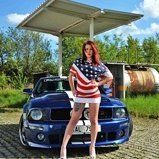
P-47D-25 & P-47D-30 1/32 Hasegawa
BiggTim and one other reacted to Miloslav1956 for a topic
Hi all, I started two jugs with : HGW rivets, wet transfers, seat belts Avionix cockpit Barracuda wheels Eagle cals Aires wheel bay & engine2 points -

1/32 Kitty Hawk F-5E Kicked Up A Notch. Oct 3/19. Finished!
jgrease and one other reacted to chuck540z3 for a topic
April 14/19 I finally finished the wings, including the control surfaces. As with everything else, every panel line was re-scribed and every rivet re-punched. I bet I’ve redone about 2,000+ rivets by now, but after a gloss black paint finish, it will be well worth it. The wing to fuselage fit is not very good, but by sanding and dry fitting many times, you can get the fit close enough that you don’t need much in the way of filler. Here’s how I did it: 1) Sand and dry fit the wing to the fuselage to get as close a possible to a perfect fit. 2) Apply Tamiya Extra Thin Cement (TETC) to the main portions of the wing to fuselage, then hold the parts tightly together with your hands until the parts are fused. This takes about 5 minutes and don’t worry about getting glue to all portions of the join. 3) Apply a good bead of TETC along the entire wing to fuselage join. This not only adheres the wing, but it makes the plastic swell, helping to close small gaps. Let it dry for 1 hour, then apply another bead, both top and bottom. You want to use lots of glue, but not so much that you make the plastic too mushy. Let it dry for 24 hours. 4) Sand the join smooth with #1000 grit sandpaper, removing any excess glue marks on either side of the seam. Remove the sanding dust. 5) Apply thin masking tape to either side of the seam, leaving a small gap no bigger than what you need to fill. 6) Thin some Tamiya Basic putty in a small jar with Tamiya lacquer thinner. Since the putty smells exactly like the thinner, I bet it’s the very same stuff. With a microbrush, apply the thinned putty along the seam. 7) Using a Q-tip dipped in more Tamiya lacquer thinner, swipe along the seam to push the putty into the gaps and smooth the overall surface. You want the putty to be slightly raised from the join, because it will shrink. 8) Carefully remove the masking tape, which should leave a straight bead of slightly raised putty. Let the putty dry for 24 hours. 9) Sand the join smooth. If you still have small holes and gaps, redo them with more thinned putty. 10) For a final sealing micro-filler coat, paint on a thin bead of Future/Pledge on the seam and let it dry for 24 hours, then sand. If you want to redo some areas, just apply Windex to a Q-tip or rag and remove it. Now some pics. The flaps and ailerons are just dry fitted and I will paint them separately for ease of handling. The fit on the bottom turned out pretty good too. The gear wells were painted before I glued on the wings. Now an often-ignored part of modeling wings. The trailing edges of wings in most kits are too fat and they should be sanded down to thin them. The ailerons in this kit do not fit the wings at all, so you need to sand each hinge down about 25% in order to get them to mesh properly. Based upon most reference pics of parked F-5’s, the rear flaps are usually straight while the ailerons are drooped down, while the front flaps can be straight or drooped down just slightly- which is how I’m going to pose them. As somebody mentioned already, this is starting to look like a jet! Thanks again for your comments and interest in this build. Cheers, Chuck2 points -
overall view.... http://s1124.photobucket.com/user/Bekim_Lulaj/media/04F20_zpsrf1ier9e.png.html][/URL]2 points
-
F-20 Tigershark
HerculesPA_2 and one other reacted to Bekim for a topic
front... http://s1124.photobucket.com/user/Bekim_Lulaj/media/04BF20_zpspxdhbf2w.png.html][/URL]2 points -
1/32 Kitty Hawk F-5E Kicked Up A Notch. Oct 3/19. Finished!
Shawn M and one other reacted to fishermanivan for a topic
Ah beauty! I have a 2001 M Coupe, so I know what you mean about the S54! Mine has a ton of miles on it, but it's too fun to drive to let it sit!2 points -
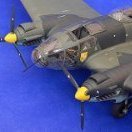
1/48th Boeing B-52H Stratofortress
Greg W and one other reacted to tomprobert for a topic
I've been having a play withe the nose radome, which is more pointed on the later G and H models. This kit's nose is more like that seen on the A to early G model, so some surgery has been needed. I did consider slicing the entire nose off, but it actually worked better using the kit's nose as a starting point, and adding the basic shape of the extension using plastic card. The plans Sanger give were useful in doing this, and it didn't take long to replicate a more H-like radome shape: IMG_0916 by Thomas Probert, on Flickr IMG_0915 by Thomas Probert, on Flickr The gaps were then filled with Milliput and when dry, sanded to shape. When the plastic card formers begin to appear, you know you're close: DSC_0102 by Thomas Probert, on Flickr However, there is a problem, as I think the lower nose area (circled below) is incorrectly shaped and is too bulbous - it's almost as if the kit's nose is like a hamster with its cheeks full. However, there'd need to be some serious surgery to sort this - the kind of surgery that I'm not unwilling to take as I do plan to have this model finished sometime this century... Nose by Thomas Probert, on Flickr I've had a bit of a play with the camera fairings on the chin, and the look of the nose is improved with these in place. Note the canopy has not been trimmed to the correct shape as of yet, hence it sits too high at the moment: IMG_0951 by Thomas Probert, on Flickr IMG_0949 by Thomas Probert, on Flickr There's still some jamming pods and sensors to add to this area, and then I'll have a look at how it looks under some primer. Until next time, Tom2 points -

1/32 Kitty Hawk F-5E Kicked Up A Notch. Oct 3/19. Finished!
A-10LOADER and one other reacted to chuck540z3 for a topic
Yes I do! I have a 1997 BMW 540 and 2002 M Roadster which are ancient now, but still in perfect shape. My 22 year old 540 has only 170K km on it and the MZ only 45K, because it's really my wife's car and she only drives it on nice days in the summer. While Z3's are not rare, this particular one is, because it has the 315 HP S54 engine that was used in the M3's during that time period. Of the roughly 300,000 Z-3s made, only 1,565 were made with this engine, so I'm hoping it will become valuable one day due to how rare it is. When the cars were new, I used to frequent BMW forums to get tips on repairs and modifications, which is where my screen name came from and I've stuck with it ever since. Here they are on a couple of road trips through pour nearby mountains. Cheers, Chuck2 points -
The first round of these sold out in a the US, I’m waiting for the next ones to hit the US.2 points
-
Thanks, but I try to use primary sources2 points
-
New 1/32 wheels producer - Halberd Models
D.B. Andrus and one other reacted to One-Oh-Four for a topic
Well, yes, I do. On a car tire it's quite visible, on a motorcycle tire, it's not. At least not when the motorcycle is standing on it's side stand. Riding a motorcycle on a track does involve lowering the tire pressure, to get the tire to warm up better and to increase the contact patch, but you'll be hard pressed to see bulges on the sidewalls or a flat spot where the tire rests on the ground. A typical motorcycle contact patch: You can see the flat spot when the tire is under load, but one hardly sees a bike modelled like this. This is me on the Zandvoort track in 2009 or 2010, BTW: Cheers, Erik.2 points -
1/32 P-38....from a reliable source.2 points
-

1/32 Kitty Hawk F-5E Kicked Up A Notch. Oct 3/19. Finished!
Marcel111 and one other reacted to chuck540z3 for a topic
Thanks everyone for your comments. While they didn't come for a few days, the reality is that the "Like" feature of this forum let me know that many tipped their hat without the need for a comment, so I was well aware that my efforts were appreciated. My last post and my next one are not big steps of progress that might motivate comments, but I want to document every single step as a future reference for this relatively new kit. I'm almost finished with the attachment of the wings, flaps and ailerons, which all have their own challenges, but the end result is well worth it. Stay tuned- and continue with the Likes if you feel so inclined. It's all I really need unless you have a question. Cheers, Chuck2 points -
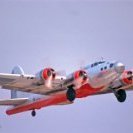
Let's get to know each other a little better. Show a photo of your
Starfighter and one other reacted to Radders for a topic
Me in 2019... i'm learning to skydive, doing my AFF Level 1-8 and then A License allowing me to jump anywhere in the world.. And what I'm jumping from... I thought this might be a new aircraft for me, but D-ISCO is ex- HA-ACO which I jumped exactly 13 years ago to this month also! Not a bad thing, good to be reunited!2 points -
Busy with stuff, but managed to get the main wheelwell assembly done. Lots of parts go into this, and after a lot of cleanup of parting joints of flash, the parts fit....really well. depth of the bay seems accurate, not shallow, bulkheads thin, l do like how the side panels interlock with the front and rear bulkheads...What's missing are all the small hydralic lines and wire bundles. Personal preference would have been simpler parts with more moulded in details. Not one to add a lot of stuff, simpler build with more detail would be OK with me. Much has been said about the complex fuselage parts, especially the lower and intakes. After doing a dryfit with cleaned up parts, i find the fit here is...remarkably good!! There is one area that will need some thought, that being between the intakes. There is a large part moulded with the lower part, its fit with the intakes is a little problematic. There is still a lot of areas to clean up to improve the fit here, i may just cut it off, work the intake fit, then add later. Another option is to cut it off and glue it to the front lower fuselage halves and work the fit later. On the Trumpeter kit, the fit here was crucial to the fit of many parts the fit of the lower wing parts interlock with the lower fuselage sides, so the fit of the sides ic also crucial. Don2 points
-
IMAM Ro43 1/32 scratch-built
Model_Monkey and one other reacted to baffozac for a topic
Relics of Ro-37 at Kabul Airport. There is a lot of differences beetween the Ro-37 and the Ro-43, not only the floats. Stefano, before I started this scratch, I asked to Special Hobby if they had planned to do this kit as they did in 1/48. I always wait their answer.......I hope to finish mine before someone else does. Ciao !!!!2 points -

IMAM Ro43 1/32 scratch-built
Model_Monkey and one other reacted to Stefano for a topic
Troy, The relics found at Bagram were Ro-37 and - yes! - one of those has been restored and it is currently displayed at Vigna di Valle. The Gruppo Amici Velivoli Storici (GAVS), a private enthusiasts group, is currently restoring a Ro-41 basic trainer. The floatplane Ro-43 is also displayed in its full glory at VdV. I am nudging some resin model manufacturers to consider releasing a 1:32 model of one of those, not having Baffozac's scratchbuilding skills. Historical subjects, simple design and forms to mould, originals available for measuring, plenty of data and gorgeous painting options. Keep trying! Some photos of the restored Ro-37, Ro-43 and Ro-41 under restoration below. Enjoy! Ro-37 206BC015-7C90-4098-B568-A00304E295CA by Stefano Salvati, su Flickr BBFDE1B5-8DA6-45E9-8824-CF45DFE7DD62 by Stefano Salvati, su Flickr 8E9F56BC-37C3-4083-A5C5-2971E4CB73BE by Stefano Salvati, su Flickr 0364C6DD-6ED0-4A1E-BB47-24C469763F10 by Stefano Salvati, su Flickr 8CDFE9B5-B014-47D0-B25D-2D5711983E75 by Stefano Salvati, su Flickr Ro-41 under restoration C6E248C0-679E-49A0-A76E-D8CDE18CC441 by Stefano Salvati, su Flickr A47F7C11-FE69-49B6-BF1D-1DAED9BC358D by Stefano Salvati, su Flickr A2DB63AD-2B88-41F7-B13F-02ABF8D70519 by Stefano Salvati, su Flickr C2C553EE-63CF-420B-8179-7960830C74B5 by Stefano Salvati, su Flickr D9F10457-535D-4755-A2EE-6A538F01672E by Stefano Salvati, su Flickr D86FECDF-3340-448A-8A14-381D8017C18E by Stefano Salvati, su Flickr 09069427-2220-4167-BEDE-7F73C8A112A2 by Stefano Salvati, su Flickr B1D50A5A-D2CB-4A92-A0D0-4018B319705E by Stefano Salvati, su Flickr Happy Modelling ... and crossing fingers to having one of those in 1:32 scale one day!2 points -
A little update. After almost two weeks in applying putty and sanding the intakes to get a decent shape, finally I think that I get the job done. Or almost done, as with the picture, I could find a little defect in one of the intakes. I needed this correction as at least in the Brazilian F-5s the intake tube is bare metal, with no kind of painting, to avoid to get any paint scrap to be sucked by the turbine. And the only way to get this kind of color is painting the interior of the tube with alluminiun paint, who are known as a paint who shows any defects. The planes are ready to continue. The problem is that I'm still waiting the PE sets to arrive here, to close the cockpits and continue the kits. The noses and the gun compartments are ready to be glued in the rest of the plane. Soon I will post pictures of them. More to come. Paulo.2 points
-
I'm actually interested in these. I like using watercolor pencils and have been getting by with a cheapo children's set that I found while cleaning out my daughters' old toys. Been looking to get another set but general artist's color palettes are a little different than what modelers are likely to use. A set of 24 Faber-Castell Watercolors sells for $36 at Amazon with more than half the shades probably not suitable for my use. A set of 36 Prismacolor Water Soluble pencils sells for $39 but again you're getting colors that are for general art use. The AK pencils retail for about $1 each and come in sets of modeler-specific applications. What's not to like?2 points
-

Fokker pair 2
Greg W and one other reacted to sandbagger for a topic
Hi all, I've added the control linkage to the top of the twin carburettors, which consist two levers, connecting rod and cable pulley. Also the connected levers on the top of the attached 'speed controllers;. I also created the frame mounted throttle bell-crank and the two cross bars on the forward fuselage frames, which are missing from the kit parts, Mike2 points -
Thanks so much, fellas! Please allow 2 weeks to print and ship your model. That will shorten considerably when an additional 3D printer arrives in June. Yes, Beaufighter designs have me consumed at the moment (in a very good way). I promise to get products for your 1/24 scale Airfix P-51 Mustangs out soon, probably early June. After that, I'll be working on some cockpits and other products for the classic Hasegawa 1/32 scale F6F-3/5 Hellcat and Boeing F4B-4. Research is complete for radiator ramps for the new-tool 1/32 scale Revell Spitfire Mk.IXc. Later this year, I'll be designing products for the classic Revell 1/28 scale Sopwith Camel and Fokker Dr.I Triplane, possibly the SPAD XIII, too. Cheers!2 points
-

1/48th Boeing B-52H Stratofortress
daveculp and one other reacted to tomprobert for a topic
The fuselage is now joined - lots of tabs were added along the mating surfaces and on the whole, I've got a pretty good join. Considering the size of the parts, they matched well. As this picture shows, there'll still be quite a bit of filler needed (par for the course with these sorts of kits) but nothing of real concern: IMG_0906 by Thomas Probert, on Flickr The H-model tail turret has also been added to the rear fuselage: IMG_0907 by Thomas Probert, on Flickr I've also lined the openings for the undercarriage bays so they are more representative of the real aircraft: IMG_0908 by Thomas Probert, on Flickr IMG_0909 by Thomas Probert, on Flickr IMG_0910 by Thomas Probert, on Flickr So now it's out with the filler... Until next time, Tom2 points -
1 point
-

New Weathering Pencils from AK Interactive
D.B. Andrus reacted to Radub for a topic
There is a similar product from a brand called Robart. It has been available through the Mikro Mark catalogue for at least two decades, albeit at a higher price. https://www.micromark.com/Paint-Shaker-120v-AC HTH, Radu1 point -
A swarm of Mossies!
Derek B reacted to Bruce_Crosby for a topic
Hi Guys, I've started on the two Tamiya Mossies at last. Yahu IP Untitled by Bruce Crosby, on Flickr Cleaning up the black boxes.... Untitled by Bruce Crosby, on Flickr ...to take some Eduard bits and pieces. Untitled by Bruce Crosby, on Flickr A bit of colour. Untitled by Bruce Crosby, on Flickr Untitled by Bruce Crosby, on Flickr Untitled by Bruce Crosby, on Flickr More to come when the photos get uploaded to Flikr. Regards, Bruce Crosby1 point -

HobbyBoss 1:32 Liberator GR Mk.VI - RAF Coastal Command
Paul in Napier reacted to MajorG for a topic
I notice that Meng managed one piece turrets...1 point -

Fokker pair 2
Greg W reacted to sandbagger for a topic
Hi all, Starting to assemble the engine accessories now. So far the spark plugs, ignition lead support tubes, camshaft, air pump, coolant drain tap and cylinder base bridging clamps. Still plenty more to do, Mike1 point -
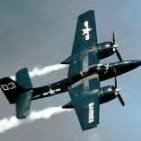
Jedha city
BloorwestSiR reacted to Out2gtcha for a topic
Been missing this kind of imagination and high end modeling Vaughn. Amazing to say the least!!1 point

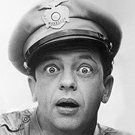



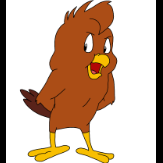
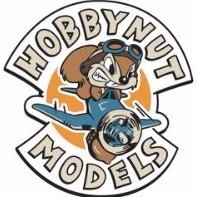
.thumb.jpg.cd22b958c9e88a898a21e18b862c523e.jpg)
